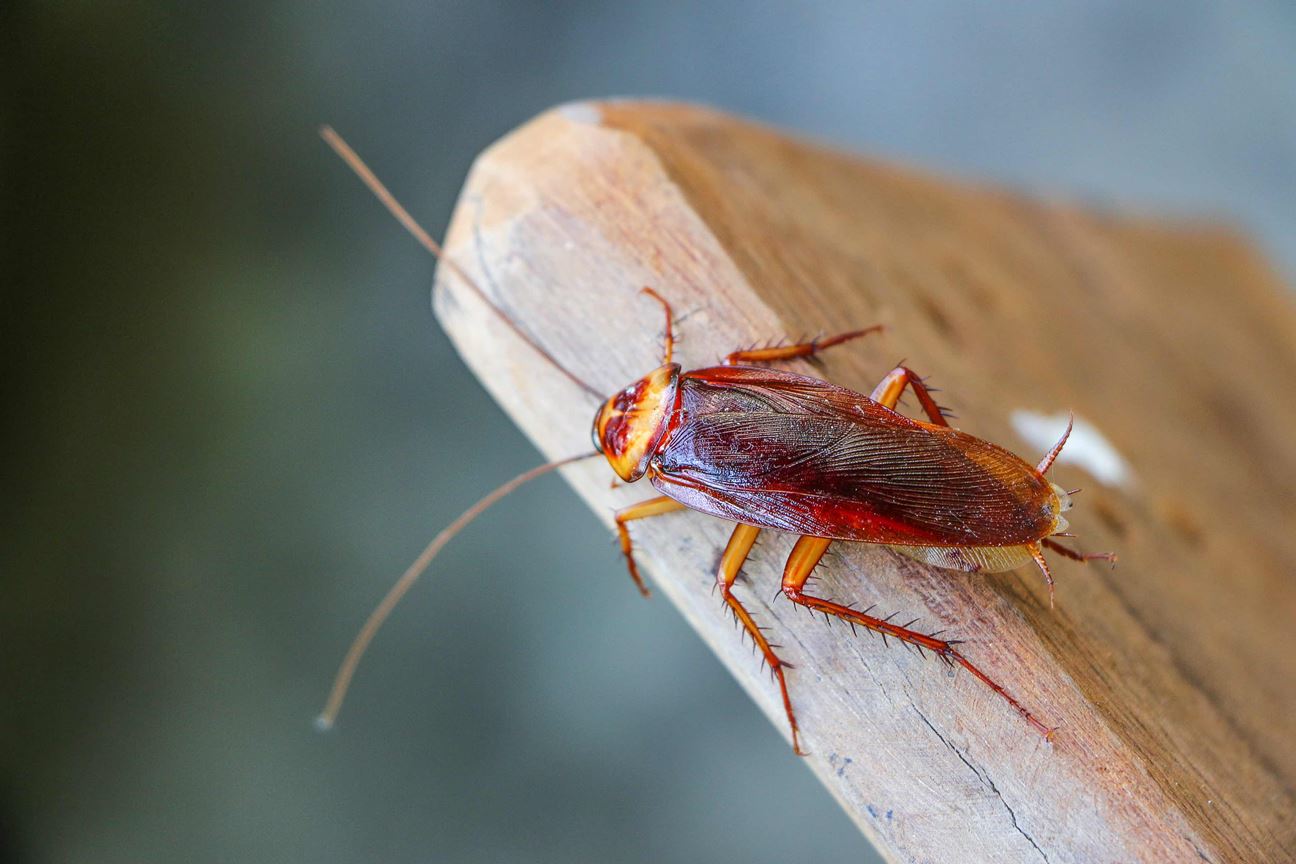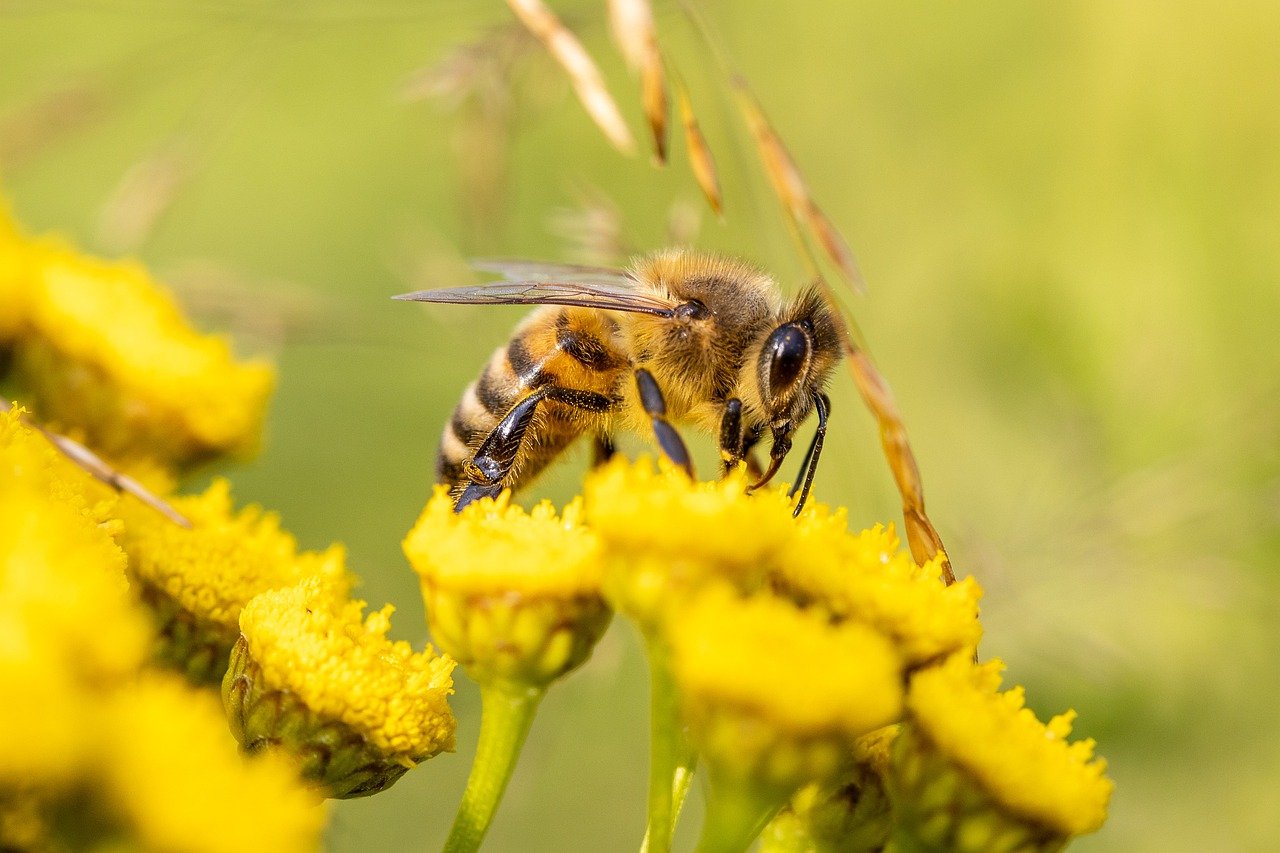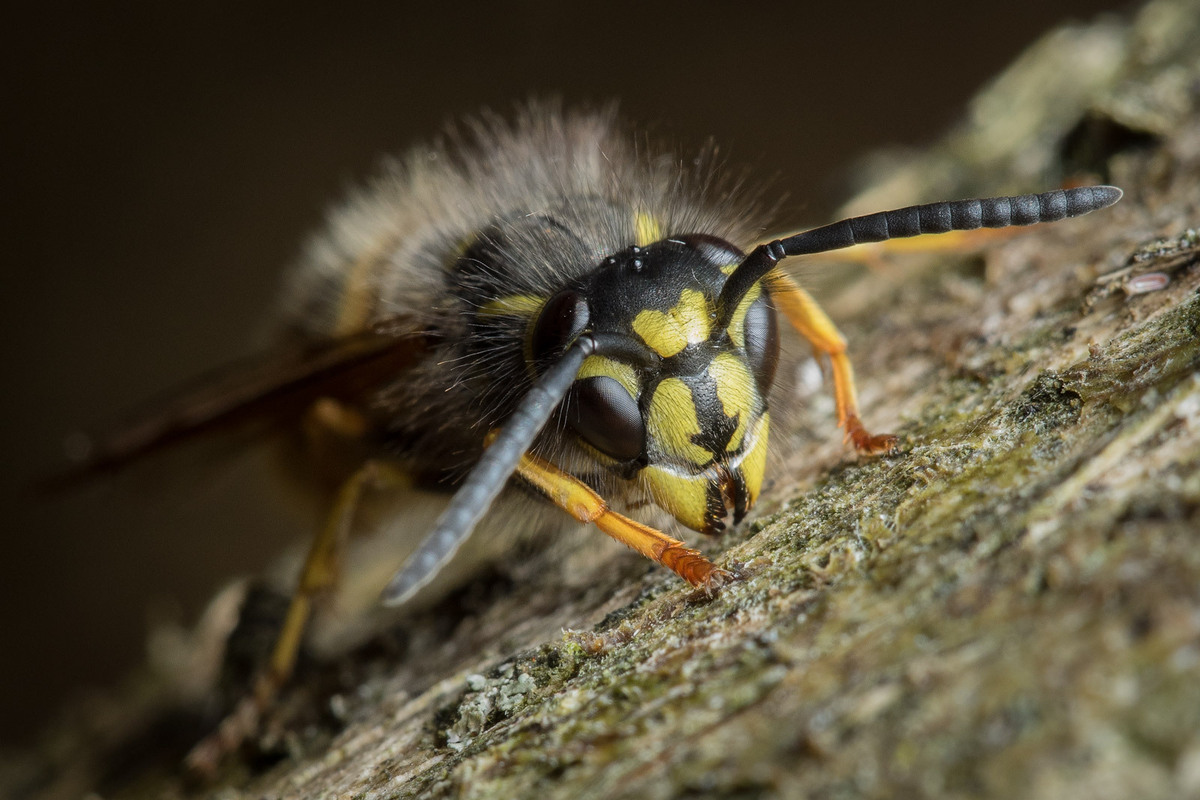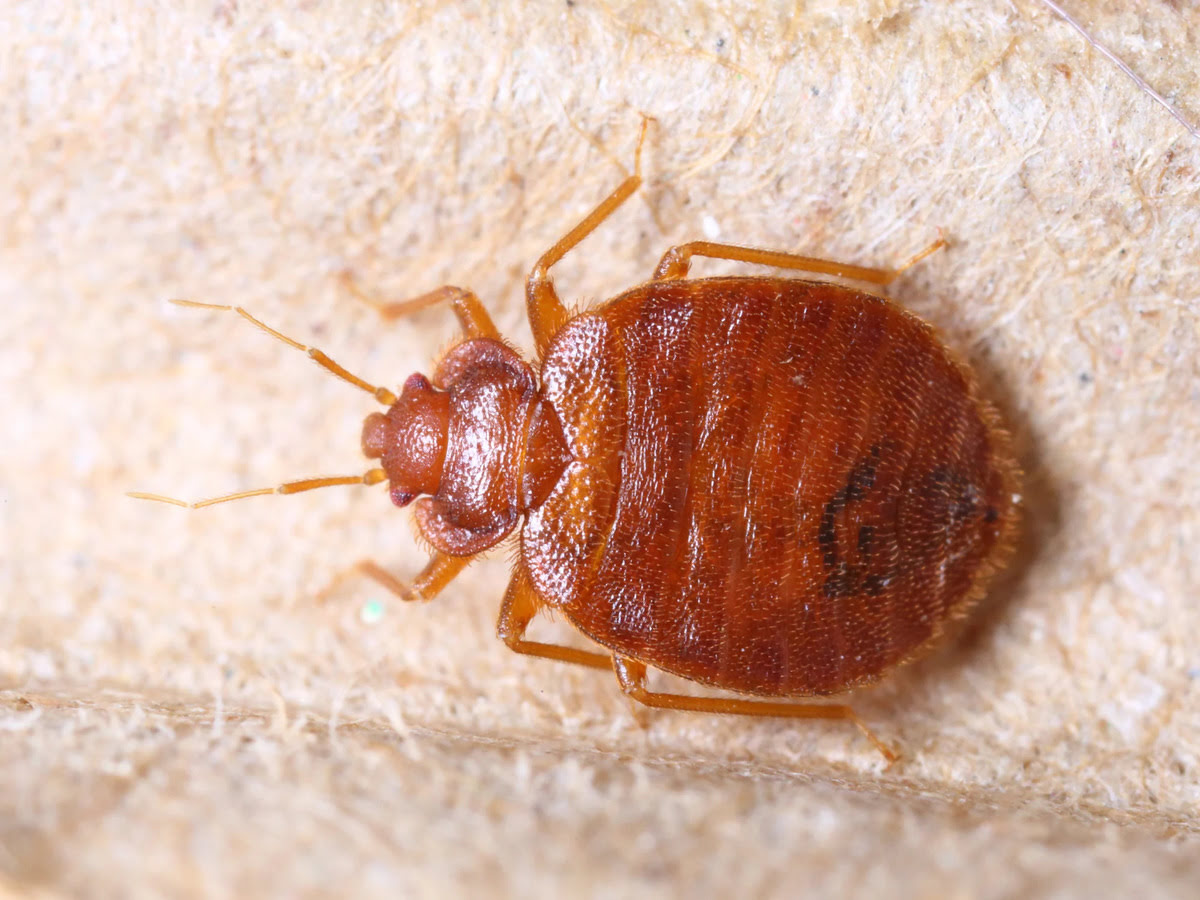Home>Gardening News and Trends>Latest News>Why Can Insects Survive High Levels Of Radiation


Latest News
Why Can Insects Survive High Levels Of Radiation
Modified: January 22, 2024
Discover the latest news on why insects can survive high levels of radiation and unravel the fascinating secrets of their resilience.
(Many of the links in this article redirect to a specific reviewed product. Your purchase of these products through affiliate links helps to generate commission for Chicagolandgardening.com, at no extra cost. Learn more)
Table of Contents
Introduction
When it comes to surviving in extreme environments, insects never fail to amaze us. From conquering harsh climates to withstanding toxic substances, these tiny creatures have evolved remarkable resilience. One area in which insects particularly excel is in their ability to survive high levels of radiation. This unique adaptation has piqued the curiosity of scientists and researchers around the world.
Radiation refers to the emission of energy, typically in the form of electromagnetic waves or subatomic particles. It can have detrimental effects on living organisms, damaging their cells and genetic material. However, many insects have developed astonishing mechanisms that enable them to thrive in environments with elevated radiation levels, such as near nuclear power plants or in areas with natural sources of radiation.
Understanding how insects can survive such extreme radiation exposure is not only fascinating from a biological standpoint, but it also has practical implications. By studying these mechanisms, scientists hope to gain insights into radiation resistance that could potentially be applied to human health and safety.
In this article, we will explore the different mechanisms through which insects are able to survive high levels of radiation. From their unique DNA repair mechanisms to cellular adaptations, these insects have developed strategies that allow them to withstand what would be lethal doses for other organisms.
Moreover, insects have also emerged as valuable bioindicators of radiation. Their presence or absence in a particular area can be used to assess the level of radiation, making them an important tool in environmental monitoring and radiation research.
Join us on this fascinating journey as we delve into the intriguing world of insects and their exceptional tolerance to high levels of radiation.
Understanding Radiation
Before we dive into the mechanisms of how insects survive high levels of radiation, it’s important to first grasp the basics of this powerful yet potentially harmful force. Radiation is the release of energy in the form of electromagnetic waves or subatomic particles. It can originate from both natural and artificial sources, including the sun, nuclear power plants, cosmic rays, and medical imaging equipment.
There are different types of radiation, classified based on their origin and characteristics. Some common forms include ionizing radiation, non-ionizing radiation, and electromagnetic radiation. Ionizing radiation, which includes gamma rays, X-rays, and high-energy particles, has sufficient energy to remove tightly bound electrons from atoms, causing cellular damage. Non-ionizing radiation, on the other hand, lacks the energy to remove electrons but can still generate heat. Examples of non-ionizing radiation include radio waves, microwaves, and infrared radiation.
Radiation can have detrimental effects on living organisms at high doses. It can damage DNA and other cellular components, disrupt biochemical processes, and cause mutations that may lead to various health problems, including cancer. However, not all organisms are equally susceptible to the harmful effects of radiation.
Interestingly, insects have adapted unique ways to tolerate and even thrive in environments with high radiation levels. While some insects exhibit high resistance to radiation, others are even attracted to it. This raises questions about the underlying mechanisms that allow these creatures to withstand radiation exposure without suffering significant harm.
Now that we have a basic understanding of radiation and its potential hazards, let’s explore the fascinating world of radiation resistance mechanisms in insects.
Radiation Resistance Mechanisms in Insects
Insects have evolved a variety of mechanisms that enable them to resist the damaging effects of radiation. These mechanisms work at the molecular, cellular, and physiological levels, allowing insects to survive and even thrive in environments with high radiation levels.
One key mechanism is the ability of insects to repair DNA damage caused by radiation. DNA repair systems are essential for maintaining the integrity and stability of the genetic material. Insects possess robust DNA repair mechanisms that help them counteract the destructive effects of radiation-induced DNA damage. One such mechanism is the activation of enzymes known as DNA repair proteins, which recognize and correct mutations and other abnormalities in the DNA structure.
Additionally, insects have been found to have an increased efficiency in DNA repair processes. They possess enhanced enzymatic activity that allows for quicker and more effective repair of damaged DNA. Furthermore, some insects exhibit a higher DNA repair capacity compared to other organisms, providing them with an added advantage in withstanding radiation exposure.
Another remarkable radiation resistance mechanism in insects is their ability to neutralize harmful free radicals. Radiation exposure can generate free radicals, which are highly reactive molecules that can cause oxidative stress and damage cells. However, insects possess antioxidant defense systems that help to neutralize these free radicals and protect their cells from oxidative damage. These antioxidant systems include enzymes such as catalase, superoxide dismutase, and glutathione peroxidase.
In addition to DNA repair and antioxidant defense, insects also exhibit cellular adaptations that contribute to their radiation resistance. For instance, some insects have specialized cells and tissues that are naturally more resistant to radiation damage. These cells may have thicker cell walls or increased levels of protective molecules that shield them from radiation-induced harm.
Furthermore, insects are known for their remarkable ability to regulate their metabolism and physiological processes. This flexibility allows them to adapt to changing environmental conditions, including high radiation levels. They can adjust their metabolic rate, enzyme activity, and gene expression patterns to optimize their survival and minimize the damaging effects of radiation.
The intricate combination of efficient DNA repair mechanisms, antioxidant defenses, cellular adaptations, and physiological plasticity equips insects with remarkable radiation resistance. By understanding these mechanisms, scientists hope to gain valuable insights into radiation resistance that may have potential applications in human health and safety.
DNA Repair Mechanisms in Insects
Insects have developed intricate DNA repair mechanisms that play a crucial role in their ability to withstand high levels of radiation. These mechanisms serve to detect and repair DNA damage caused by radiation exposure, ensuring the stability and integrity of their genetic material.
One important DNA repair mechanism in insects is known as base excision repair (BER). BER is responsible for correcting specific types of DNA damage, such as single-strand breaks, base modifications, and small deletions or insertions. In this process, specialized enzymes recognize and remove damaged bases, and the gap is then filled with the correct base sequence by other DNA repair proteins.
Another DNA repair mechanism utilized by insects is nucleotide excision repair (NER). NER is involved in repairing a broader range of DNA damage, including bulky lesions and crosslinks. This process involves the recognition and removal of the damaged DNA segment, followed by the synthesis of a new DNA strand to restore the original sequence.
In addition to these repair mechanisms, insects also employ homologous recombination (HR) to repair DNA double-strand breaks (DSBs). DSBs are particularly harmful as they pose a higher risk of genetic instability. During HR, the intact sister chromatid serves as a template for accurate repair, ensuring that the correct DNA sequence is restored.
Furthermore, insects have been found to possess efficient mechanisms for repairing DNA damage in their developmentally regulated genes. These genes are crucial for proper development and function, and preserving their integrity is essential. Insects utilize specialized DNA repair pathways, including transcription coupled repair (TCR) and global genome repair (GGR), to ensure the accurate and timely repair of DNA damage in these critical genes.
It is worth noting that some insects have even developed novel DNA repair mechanisms that are not found in other organisms. For example, certain species of insects have been found to possess an enzyme called photolyase, which can repair DNA damage caused by ultraviolet (UV) radiation through a process called photoreactivation. This unique mechanism enables these insects to repair UV-induced DNA lesions, further enhancing their radiation resistance.
By understanding the intricate DNA repair mechanisms employed by insects, scientists can gain insights into how these organisms can tolerate high levels of radiation. These findings not only contribute to our understanding of radiation biology but also have potential applications in fields such as cancer research and human health.
Cellular Adaptations in Insects
In addition to their efficient DNA repair mechanisms, insects have also developed remarkable cellular adaptations that contribute to their ability to survive high levels of radiation. These adaptations help protect their cells from radiation-induced damage and maintain their overall health and function.
One notable cellular adaptation is the thickening of cell walls. Some insects possess thicker cell walls that act as a physical barrier, providing additional protection against radiation. These thicker walls are composed of complex molecules such as chitin, which enhances the structural integrity of the cells and reduces the penetration of radiation.
Furthermore, insects have developed mechanisms to control and regulate their cellular oxidative state. Radiation exposure can generate reactive oxygen species (ROS), which can cause cellular damage. Insects possess specialized enzymes, such as superoxide dismutase (SOD) and catalase, which help neutralize and break down these harmful ROS, preventing oxidative stress and maintaining cellular function.
In addition to enzyme-based antioxidant defenses, some insects also produce and accumulate high levels of antioxidants, such as glutathione, within their cells. These antioxidants act as scavengers, capturing free radicals and minimizing the damage caused by radiation-induced oxidative stress.
Insects also have an efficient system to manage and repair damaged cellular proteins. Radiation exposure can lead to the misfolding or aggregation of proteins, which can disrupt essential cellular processes. Insects possess specialized proteins called chaperones that help refold and repair damaged proteins. This ensures proper protein function and maintains cellular homeostasis even in the presence of radiation-induced stress.
Additionally, certain insects have developed unique mechanisms to combat radiation-induced DNA damage at the cellular level. They activate DNA damage response pathways, which signal the presence of DNA lesions and initiate appropriate cellular responses. These responses can include cell cycle arrest, DNA repair activation, or programmed cell death (apoptosis) to eliminate severely damaged cells.
Moreover, insects exhibit enhanced cellular metabolism and energy utilization under radiation exposure. They can regulate their energy production and consumption to support cellular repair, maintain homeostasis, and mitigate the effects of radiation-induced stress.
The combination of these cellular adaptations allows insects to withstand radiation exposure by minimizing cellular damage, repairing DNA lesions, and maintaining overall cell health. These remarkable adaptations not only highlight the amazing resilience of insects but also provide crucial insights into radiation biology and potential applications in fields ranging from medicine to environmental sciences.
Insects as Bioindicators of Radiation
In addition to their fascinating radiation resistance mechanisms, insects have also emerged as valuable bioindicators of radiation. Bioindicators are organisms that provide insights into the presence, levels, and effects of environmental factors, including radiation. The unique characteristics of insects make them ideal candidates for assessing radiation levels and monitoring the impact of radiation on ecosystems.
One of the reasons insects are excellent bioindicators of radiation is their remarkable sensitivity and responsiveness to radiation exposure. They can detect even slight changes in radiation levels, making them highly reliable markers for radiation presence. Insects are capable of reacting rapidly to fluctuations in radiation, and their population dynamics and behaviors can provide valuable information about the environmental radiation status.
Insect populations often exhibit observable changes in response to radiation exposure. These changes can include alterations in population size, reproductive patterns, behavior, and species composition. By monitoring these changes, scientists can gather data about the levels and effects of radiation in a particular area. This information is crucial for understanding the potential ecological impacts of radiation and guiding appropriate mitigation strategies.
Furthermore, the variety and abundance of insect species make them valuable bioindicators for characterizing radiation gradients. Different insect species have varying sensitivities to radiation, and their presence or absence can help define the boundaries of radiation zones. By studying the distribution and diversity of insects in relation to radiation levels, researchers can create detailed maps that illustrate the extent of radiation contamination.
Insects are also highly mobile organisms, capable of dispersing over large distances. This mobility allows them to provide insights into radiation spreading and contamination beyond the immediate vicinity of radiation sources. By studying insect movement patterns and population dynamics, scientists can gain valuable information about the dispersion of radiation and its potential impacts on different ecosystems and habitats.
Moreover, because insects occupy different trophic levels in ecological food chains, they can serve as indicators of radiation transfer through the food web. Insects at lower trophic levels may accumulate radiation from the environment, and when consumed by higher trophic level organisms, the radiation can biomagnify up the food chain. By monitoring radiation levels in insects at different trophic levels, scientists can assess the extent of radiation accumulation and transfer in ecosystems.
The use of insects as bioindicators of radiation offers several advantages. They are cost-effective, easy to sample, and provide real-time data about radiation levels and impacts. Additionally, since insects are abundant and diverse in most terrestrial environments, their use as bioindicators allows for widespread monitoring of radiation across various landscapes and ecosystems.
Overall, the ability of insects to serve as bioindicators of radiation provides valuable information for assessing environmental radiation exposure, understanding its ecological impacts, and guiding effective radiation management and mitigation strategies.
Applications in Radiation Research
The study of insects and their remarkable resilience to radiation has significant implications in various fields of radiation research. The unique mechanisms and adaptations displayed by insects not only provide insights into radiation biology but also have potential applications in areas such as medicine, environmental monitoring, and biotechnology.
One key application is in the field of radiation therapy for cancer treatment. Radiation therapy utilizes ionizing radiation to target and destroy cancer cells. Understanding the mechanisms through which insects protect their cells from radiation-induced damage can offer valuable insights into improving radiation therapy techniques. By studying insect DNA repair mechanisms and cellular adaptations, researchers can develop strategies to enhance the effectiveness of radiation therapy and minimize damage to healthy cells.
Insects also offer valuable contributions to environmental monitoring and assessment of radiation levels. Their sensitivity and rapid response to changes in radiation make them reliable indicators of the presence and extent of radiation contamination. Monitoring insect populations, behavior, and diversity can help identify areas with elevated radiation levels and assess the effectiveness of radiation remediation efforts. Furthermore, studying the distribution patterns of insects in contaminated areas provides valuable information for understanding radiation dispersion and its impact on ecosystems.
The application of insect bioindicators in radiation research extends to the agricultural sector as well. Insects are crucial for pollination and play a vital role in the production of crops. Assessing the effects of radiation on insect populations and their behavior can shed light on the potential impacts of radiation on agricultural ecosystems. This information can help optimize agricultural practices in areas with radiation exposure and guide strategies to minimize the risks to crop production and food security.
Beyond radiation monitoring and ecological impacts, insects also offer potential applications in biotechnology and biomaterials. The unique enzymes and proteins found in insects, such as DNA repair proteins and antioxidant enzymes, can serve as valuable resources for developing new therapeutics and technologies. These insect-derived proteins could be used in the development of radioprotective drugs, antioxidant supplements, or materials for radiation shielding.
Furthermore, insects’ ability to survive and adapt to high levels of radiation can inspire advancements in the field of radiation-resistant materials. By studying the cellular and molecular mechanisms of radiation resistance in insects, scientists can gain insights into developing materials that can withstand radiation exposure, such as protective clothing for radiation workers or materials for shielding sensitive equipment.
Overall, the study of insects and their radiation resistance mechanisms has numerous applications in radiation research. From improving cancer treatments to environmental monitoring and engineering innovations, the insights gained from insects can lead to significant advancements in radiation-related fields, benefiting human health, the environment, and technological advancements.
Conclusion
Insects have proven themselves to be extraordinary creatures when it comes to their ability to survive high levels of radiation. They have evolved an array of intricate mechanisms and adaptations that allow them to withstand radiation exposure and thrive in environments that would be lethal for many other organisms.
From their efficient DNA repair mechanisms to their cellular adaptations, insects have developed strategies that enable them to repair DNA damage, neutralize harmful free radicals, and maintain cellular integrity. These mechanisms, along with their remarkable sensitivity to radiation, make insects excellent bioindicators for monitoring radiation levels and assessing ecological impacts.
The study of insects and their radiation resistance mechanisms has wide-ranging applications in various fields. In the realm of medical research, understanding these mechanisms could lead to improvements in radiation therapy techniques for cancer treatment, minimizing damage to healthy cells while targeting cancer cells more effectively.
In the field of environmental monitoring, insects serve as reliable indicators, providing real-time data about radiation levels and contamination. Monitoring insect populations and studying their behavior help assess radiation dispersion and evaluate the effectiveness of remediation efforts.
In agriculture, studying the effects of radiation on insects can inform practices to mitigate risks to crop production and food security in areas with radiation exposure.
Additionally, the unique enzymes and proteins found in insects offer potential applications in the development of new therapeutics, biomaterials, and technologies. Insights into radiation resistance mechanisms can inspire advancements in the development of radioprotective drugs, antioxidant supplements, and radiation-resistant materials.
The study of insects and their exceptional tolerance to high levels of radiation opens up new avenues for research and innovation. By unraveling the mysteries of their radiation resistance mechanisms, scientists are gaining valuable insights that have the potential to benefit human health, the environment, and various technological fields.
As our understanding of insects and their remarkable adaptations continues to grow, we are reminded of the wonders of nature and the incredible resilience of these tiny creatures in the face of one of the most powerful forces on Earth: radiation.









